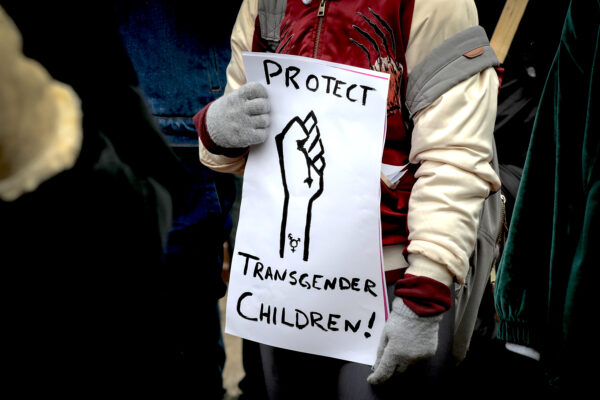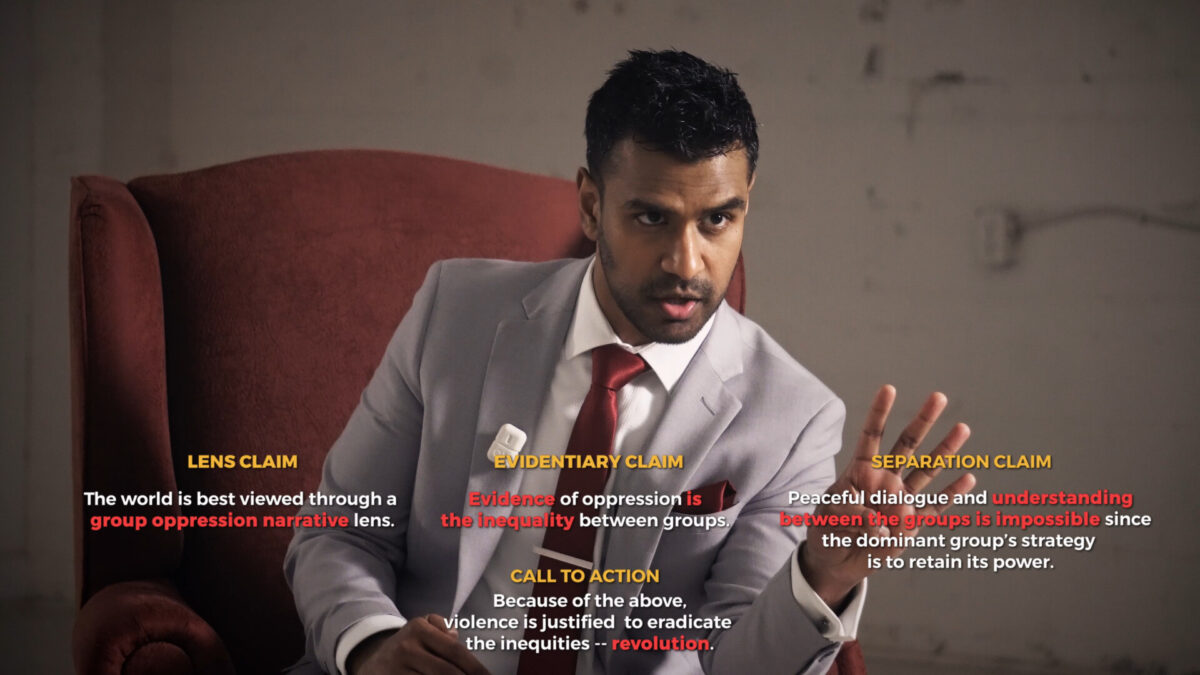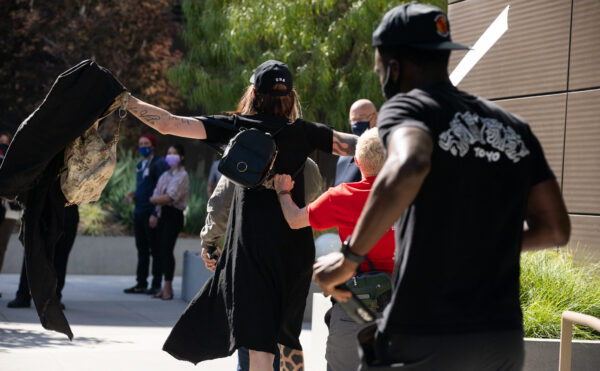Ideology creates paranoid mindset and can lead people to blame others, society for their problems
Ideology currently permeating the political movement around gender and transgenderism drives its adherents into psychological corners and makes them susceptible to radicalization, according to several experts on radical movements and religious extremism.
The ideology imparts a simplistic, polarizing worldview that traps its victims in paranoia and rage, they said.
The issue has come to the forefront recently with several high-profile incidents.
On March 27, Audrey Elizabeth Hale shot dead six people, including three children, at the Covenant School in Nashville, Tennessee. Police said Hale identified as transgender.
About a week later, a 19-year-old was arrested in Colorado for attempted murder after police found in his home detailed plans for multiple school shootings. He identified as female, local news reported.
Also in Colorado, one of the two murderers in the 2019 STEM School Highlands Ranch shooting, 16-year-old Alec McKinney, was a woman who identified as male.
While the incidents don’t add up to a trend, they may reflect a deeper problem.
Surveys in recent years have revealed an elevated potential for radicalization among transgender people.

“Transgender and gender-diverse youth emerge as the group at the highest risk of support for VR [violent radicalization]. This is in line with results of a recent survey conducted during the pandemic that highlighted high levels of support for VR as well as psychological distress among gender minorities,” said a paper based on a 2021 survey of Canadian college students.
Signs of psychological stress among transgender people are off the charts, with surveys indicating about 30 percent of them attempt suicide.
Underlying Mental Problems
If a person, especially a child, expresses discomfort with their gender, the matter should be handled thoughtfully on a case-by-case basis, experts have argued.
“I would want to ensure that people who continue to have problems with the sense of their body … get serious medical attention and serious attention to all of their emotional and psychological issues,” said Philip Carl Salzman, emeritus professor of anthropology at McGill University.
Salzman has dedicated the latter part of his career to studying the issue of freedom and equality. He noticed that rather than handling transgender cases individually, the approach has become a formulaic “fast-track gender affirmation policy.”
That, in and of itself, he considers irresponsible.
“Many of the people who are trans now have very serious psychological comorbidities. Many of them are autistic, many of them have deep depression,” he said.
“There’s a vulnerable time in adolescence where people feel very disturbed,” he said.

For some, that may involve questioning their gender, but “the great majority of young people who say they’re not comfortable in their body desist from that claim once they’ve gone through adolescence,” he noted.
Yet now, there’s a broad push to make gender questioning universal, especially among youth, and seemingly to encourage as many people as possible to settle on a gender other than the one they grew up with.
“They’re being groomed to do this,” Salzman said.
“They’re being groomed to do it by teachers. They’re being groomed to do it on social media. These things are being directed to them, being imposed on them.”
This push has emerged as a consequence of mixing a legitimate medical condition of gender dysphoria, extreme discomfort with one’s innate sex, with a radical political narrative, he and others have observed.
‘Us’ vs ‘Them’
The political narrative around transgenderism posits that “gender-diverse” people are fundamentally at odds with people willing to live with their innate sex, who they are encouraged to call “cisgender.”
“It’s a neo-Marxist model that divides society into oppressors and victims and characterizes the victims as innocent and the oppressors as evil. So people who identify as victims feel justified in hating the category of people who are alleged to be their oppressors,” Salzman said.
This paradigm has been applied by Marxism to class, by critical race theory to race, by radical feminism to sex, and by “queer theory” to gender.
For the adherents of the transgender ideology, “cis-hetero-normativity” is “the enemy that wants to destroy them,” Salzman said.
This kind of worldview then “fuels resentment, opposition, hate, and potentially violence,” he said.
“It’s a paranoid mindset in the sense that all of your troubles are the result of what other people do to you. So my problems are not my problems, they are problems that have been foisted on me.”

Many parents struggling with their children’s self-declared gender change have reported their children speaking dismissively or resentfully about “cis” people as a group, especially when talking to their transgender friends.
“In general, cis-gendered people are considered evil and unsupportive, regardless of their actual views on the topic. To be heterosexual, comfortable with the gender you were assigned at birth, and non-minority places you in the ‘most evil’ of categories with this group of friends. Statement of opinions by the evil cis-gendered population are [considered] phobic and discriminatory and are generally discounted as unenlightened,” one parent said, according to a 2018 study.
The ideology prevents its followers from living a balanced way of life, according to Janice Fiamengo, a retired English professor at the University of Ottawa and expert on radical gender ideologies in the feminist realm.
“I think the main issue is the resentment that victim ideology inevitably produces. Victim ideology is grounded in the belief that one’s group is uniquely victimized, and that no one else suffers in the (preventable, allegedly) manner in which the victim does,” she told The Epoch Times via email.
“In this, it rejects the wisdom of most world philosophies and religions, which understand that suffering is part of the human condition, and that accepting suffering is necessary for wholeness and health.”
Precursors to Violence
The oppressor-oppressed dynamic is one of four precursors to political violence that has many times ravaged various corners of the world over the past 100 years “under the masthead of the isomers of equity,” according to filmmaker Curt Jaimungal, who exhaustively documented the phenomenon in his documentary “Better Left Unsaid.”
Another precursor is the claim that “evidence of oppression is the inequality between groups,” the documentary says.
In this context, trans activists most often point to the high suicide rates among transgender people as well as anecdotal evidence of transgender people being murdered as evidence of “trans genocide.”
Salzman rejected such a characterization.
“The idea that there’s some campaign to kill trans people is totally imaginary and totally paranoid,” he said.
In 2021, there was one murder classified as a hate crime against a transgender or gender non-conforming person, meaning this identification allegedly figured in the crime’s motive, based on data from about two-thirds of U.S. police agencies.
In 2022, 38 transgender people were killed in violent incidents, according to Human Rights Campaign, an LGBTQ lobby group.
Given that transgender people make up an estimated 0.6 percent of the population, the homicide rate would be about three to four times lower than in the general population. The group cautions, however, that the data is likely incomplete because the gender self-identification of the victim is not always reported.
For cases where details have been reported, the most prominent circumstances of the killing appear to be domestic violence and prostitution, according to an analysis by The Federalist’s Chad Felix Greene.
The third precursor Jaimungal pinpointed is a claim that “peaceful dialog and understanding between the groups is impossible since the dominant group’s strategy is to retain its power.”

Trans activists have commonly argued that the issue cannot be debated because criticizing the ideology encourages people to dismiss the experiences of transgender people as imaginary, the implication being that this increases psychological stress on such individuals and increases the risk of suicide.
Any attempts to approach the issue without total acquiescence to the ideology typically prompts dramatic accusations.
“Disagreeing is hate speech and hate is equivalent to violence,” Salzman summarized.
The final precursor Jaimungal identified is a call for violence.
Journalist Andy Ngo has documented a number of examples of trans activists engaging in, threatening, or advocating for violence in just the past two weeks.
While sporadic so far, such acts of violence seem to trace a broader ideological milieu.
Thomas York, who holds a doctorate in religious studies and previously lectured on religion, violence, and ethics at the University of Toronto, has noticed radicalization in the trans community bears similarities to Islamist radicalization.
Though not religious per se, the trans ideology fits the “functional definition of religion,” meaning it serves the “social function or the psychological function” of a religion for its followers, York told The Epoch Times.
“It does perform a lot of the same functions. It has rituals, it has a community, it has its own sense of good and evil, its own morality. Moreover, it shares the same characteristics as the radical movements in religious traditions that bring about religious violence,” he said.
After dialog has been abandoned as a solution, violence is the next logical step.
“It’s either they feel it’s going to take too long or it’s not going to work, that things are so wrong that there has to be this ‘purge’ of the old world order, a violent purge,” he explained.
The violence is then framed as an act of self-sacrifice.
“They view themselves as a martyr, that they’re defending a marginalized community that they feel is under attack,” he said.
Still, the individual usually needs to feel the violence would accomplish something, even meet with approval.
“They don’t arise out of a vacuum. They are encouraged by a lot of people who themselves would never engage in violence,” he said.
The community might publicly disavow the violence, but privately condone it or sympathize with it.
“Most Muslims don’t agree with suicide bombers, but there is a large enough contingent within Islam that does believe it that it encourages the suicide bombers to take action. They are actually venerated by numerous people in their community and that’s why it encourages them to do it,” he explained.
The terrorist act itself then doesn’t need to accomplish much in and of itself, but rather “purge” the perceived evil symbolically.
“They can’t eradicate the entire old world order by themselves, so they do it through this great symbolic gesture that they know is going to get attention,” he said.
Way Out
Leaving a radical movement tends to be a painful experience, York said, speaking from a personal experience of being a radical animal rights and environmental activist in his youth.
“It brings a kind of a feeling of euphoria to you to be a part of a movement. You lose your identity in it and you become part of this group and you feel empowered by that,” he said.
“So it’s a euphoric feeling and you feel very, very committed to it. But then you’re also at the same time afraid that if you don’t conform or you say suddenly the wrong thing, you will be excommunicated or purged by other people.”
That can put a lot of pressure on the members, especially those who don’t have much of a life outside of the movement.
“You feel almost suicidal because you feel like you’ve lost your entire raison d’etre, your reason for being,” York said. “So the fear of doing that makes them conform more to this narrowing of the ideology. And some of them become ‘superactivists’ who see their role as taking it to the next level and sort of outdoing the others and being the leaders.”
In his experience, since members get to depend on the movement for “a sense of purpose and belonging,” they won’t let go of it easily.
“I think the only way they can get out of it is to sort of suffer what has been called existential disappointment,” he said.
“Your heart is broken by what you perceive as the irreparable failures of the movement and that you can’t fit in it anymore or you’re purged from it maybe.”
That was his experience. He still believed in animal rights and environmental causes, but could no longer identify with the activism. He was particularly turned off by people bringing Marxist ideas into the movements, he said.
“I didn’t really think they belonged to those movements, but I was alone in that.”
In the end, he felt he had to leave.

“It’s as serious as a very committed relationship breaking apart. But you get over it,” he said. “Just like a heartbreak, it repairs in time.”
It’s actually normal for young people to pursue a controversial cause.
“When you’re a teenager, you rebel and you adopt this alien identity that eventually you grow out of. It’s called individuation,” York said, referring to the term used by psychologist Carl Jung.
The problem with taking up the transgender cause for this purpose is that it can leave life-long consequences. Gender transition is a long process that can be extremely taxing on both the physical and mental health of the patient, especially when it reaches the level of surgery.
“This is much more serious than just becoming punk rocker,” he noted.
The way the movement presents itself, however, is exactly by catering to the individuation urge.
“On social media, which has amplified this a lot, these kids, they’re drawn to the power of this movement because it has such conviction,” he said.
Matching that conviction can earn one praise and encouragement—often a scarce commodity in adolescence.
“What happens in this community is that you feel compelled to jump in with both feet and become hardcore. There are rewards involved in doing that,” York said.
The solution, he said, would be to offer people “an alternative paradigm” which “has to be as strong as the thing it’s replacing.”
“As an activist, it’s hard to go from something that gives you ultimate meaning to just regular, everyday life again. It’s very difficult to make that transition” he said.
“Because everyday life is not fulfilling. You have your boring job or school or the problems in life and you still see the problems everywhere that compelled you to be an activist and they’re not being addressed.”
The alternative thus needs to be deeper and more meaningful.
“You have to have something as powerful to draw you away from it almost, like another faith, if you will,” he said.
